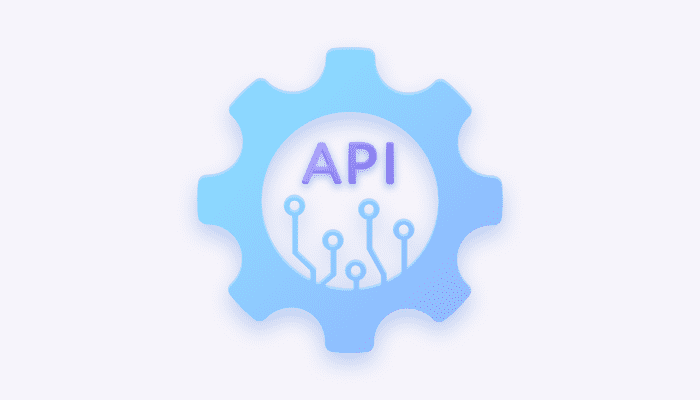
Building chat applications with real time messaging, video chat, file sharing or other useful features can be a hugely costly enterprise requiring months of planning and development work and significant technical expertise. Fortunately, countless companies today are bypassing the app-building process by licensing pre-built communication software in the form of chat APIs. This innovative, third-party, cloud based software is taking the app-building world by storm.
APIs, which are generally provided as a service from SaaS (software-as-a-service) or CPaaS (communication-platform-as-a-service) providers, can be easily integrated into pre-existing apps, or used to build stand-alone apps. When you license a chat API from a vendor, you are not only granted access to the software but also to a host of other services including cloud hosting for your application and technical support. The growing popularity of API vendors is clearly reflected in the statistics. CPaaS market revenue alone was valued at $4.26 billion in 2019, reached $5.9 billion in 2020, and is expected to reach $17.71 billion by 2024 according to an IDC report.
But what exactly does a chat API do and why is it becoming so popular? In the following we provide a general overview. By understanding what an API is, why you might need it, and how to choose the right one, we hope to help you take full advantage of all that this third-party software can offer your business.
What is a Chat API?
In a nutshell a chat API makes it possible to integrate live chat services and instant messaging into mobile applications or websites. But let’s understand this technology in more detail. API stands for application programming interface, which is a set of code that enables two applications to interact with one another. Every time you use your phone to check a sport’s score, ask for directions, or send an instant message you are using an API. The API acts as a messenger transmitting your request to the application you’re requesting it from, and then, if your request is accepted, retrieving the data and transmitting it back to you. Needless to say, APIs are tremendously helpful.
In the world of online communication a chat API processes communication requests and facilitates live chat messaging between two or more parties via a mobile app or web browser. The API connects your application to a backend communication platform that provides real-time chat functionality.
What is the difference between an API and SDK?
There is some confusion between APIs and SDKs. Like an API, a software development kit (SDK) also provides a shorthand way for building an app. Instead of having to code from scratch, a chat SDK comprises a complete installable software package, or kit, that enables communication functionality. This package includes code samples, code libraries, a debugger, and very often an API. So an SDK often includes an API, (although may not), but an API can also exist as a standalone piece of software.
Why do I need a Chat API?
If chat API powers real-time communication, then real-time communication powers the digital transformation of the business world. Business leaders today understand that easy and immediate communication is central to their growth and productivity. The ability to communicate in real-time with customers, business partners, employees, and vendors has become a normal and expected part of everyday life. In fact, failure to provide these tools for your team and clients puts your business at a significant disadvantage. Hastened by the impact of the COVID-19 global pandemic, the need to connect remote parties in real-time communication is greater than ever.
How to use a Chat API?
A chat API can be used in countless use cases from telehealth apps that offer an essential means for a healthcare provider to offer remote consultation to patients, to an e-commerce platform that relies on live messaging to engage new customers and facilitate transactions between sellers and buyers. Chat API is an extremely effective tool for customer service enabling instant communication between a service provider and customer. Live events, such as conference webinars, or gaming and sporting events use chat API to enable large audience participation, as viewers can post comments and questions in real-time in a streaming window. Real-time messaging features create significant convenience for on-demand service providers such as ride sharing or food delivery in which they need a quick and direct means to communicate with customers. In this era of remote work, a secure instant messenger app is an indispensable tool for enabling a connection and collaboration between employees across departments.
In summary, more and more businesses and organizations are discovering that the integration of feature rich chat API for internal and/or external communication offers a host of benefits. Real time communication enhances employee productivity, improves customer relations, facilitates customer engagement and commercial transactions, provides for a positive user and customer experience, generates trust in company brand, and strengthens customer retention, and ultimately supports business growth.
What are the Advantages of using a Chat API?
There are several advantages of using a ready chat API not least of which is time and cost efficiency. Because the software is already built your development team saves time not having to code from scratch, which means your business saves money. Integrating pre-built features means a shorter time to market. Also, because your developers are not having to build an entire back-end, they can concentrate their efforts on developing the core strengths of your product, building a truly immersive client-side application.
Furthermore, when you license a chat API you are signing up for an entire service that takes care of a variety of needs including hosting infrastructure, technical support and upgrades. Although you’ll have to pay a monthly subscription fee, you’ll save costs in other ways. For example, the API vendor will be responsible for maintaining and updating the software – this takes a significant burden off your development team.
How do I choose a Chat API?
If you’re deciding to go down the third-party API route then how do you choose the right API for your messaging solution? There are many products to choose from that vary considerably. So when designing your chat application you need to think carefully about your specific business and technical requirements.
What features do they offer?
Be sure of which App features you need at the outset or might want to add at a later stage before you make your choice and compare this against the provider’s offering. Although chat APIs share similar broad features they are not all equal, but for optimal user experience you may want to choose an API that offers more advanced features such as moderation tools or integration with an authentication system.
What level of customizable is possible?
If you are intending to create a very unique chat app experience, then need to check which features, if any, are customizable beforehand as not all APIs are designed to be adapted. It’s always important to anticipate your future needs as well as you may want to incorporate new features or modify old ones with easy updates.
What platforms and technologies do they support?
Whether you are adding communication features on websites, smart phones, or tablets will inform your choice of API vendor. Even if APIs tend to be web based, the chat SDKs that are often used alongside the API are platform specific (e.g. iOS, android, web) so pick one that is platform compatible.
You also need to consider your broader technology stack (e.g. HTTP, Push/Streaming, Ajax, WebSocket, REST, XMPP) to ensure compatibility. For example, if you are hoping to add video chat to your app and to make the most of WebRTC technology for this, make sure you choose an API/SDK that works for this set up.
Where will my chat solution be hosted?
Also consider the hosting infrastructure of the API vendor you choose. Most Saas/CPaaS providers require you to host your application and associated user data within their cloud hosting environment. This may be a problem for you if you are required by regulations or industry standards to maintain ownership of data or to store locally. Choose an API vendor who can meet your specific hosting requirements.
QuickBlox Chat API
If you are thinking of building a chat service with an API take a look at QuickBlox chat API. We offer a robust communication solution designed to give you security, flexibility, and high performance. Our communication solution can enhance your business and promote user engagement. Key features include:
- Multiplatform for mobile and web
- Flexible level of customization
- Comes with comprehensive reference documentation, code samples, and SDKs for easy integration
- Feature rich chat: basic features include 1-to-1, private group, and public group chat messages, delivery status, read receipt, typing indicators, offline status indicator, chat history; Advanced features include chat moderation tools, profanity filters, push notifications, database encryption, the option to add additional communication channels like video chat, and more.
- Our API supports basic authentication with the use of an access token, or can be integrated with your own two-factor authentication system for extra convenience and security.
- HIPAA and GDPR compliant
- Secure hosting options on your own cloud infrastructure or on a QuickBlox cloud account both of which are fully managed services. Alternatively, we can host on-premises.
App development is now intrinsically bound up with the use of pre-built APIs (and SDKs). To find out more about the benefits of chat API and how QuickBlox can support real-time communication solutions, speak to one of our consultants now.








